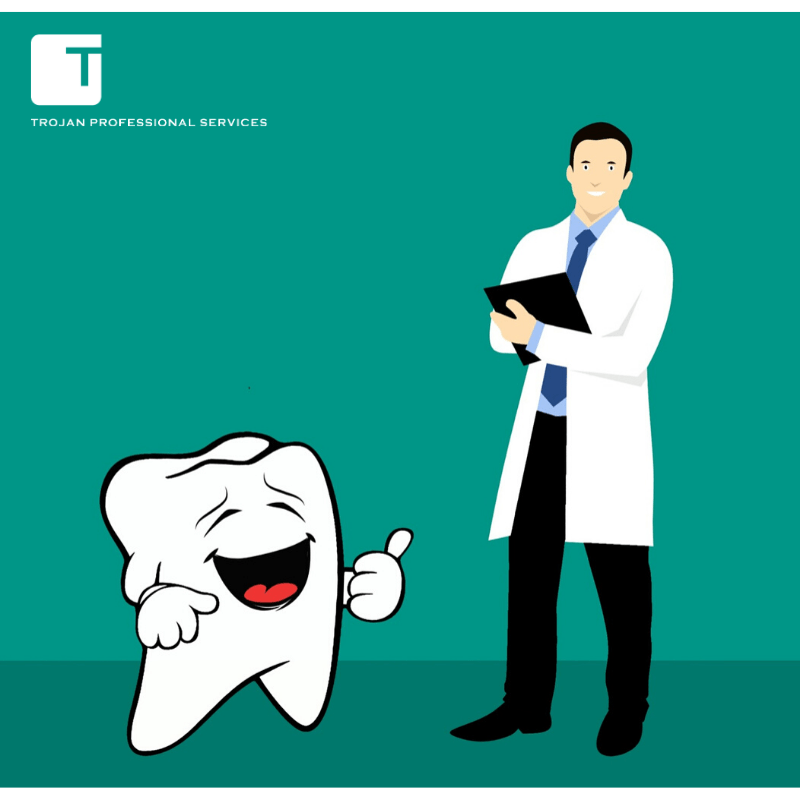Originally published in 2011
Have you ever been sold something and then days later wondered why you bought it?
When you came to the conclusion you were “sold to,” how did you feel about yourself, the salesperson who sold the service or product to you, and the company? On the other hand, have you ever purchased products or services you really didn’t need …but you didn’t feel the same negativity towards the salesperson or the company? Why? In those instances, you were probably an integral part of the purchasing process.
If your sales process in dentistry is a one-sided regurgitation of procedures and techniques, you may not be appealing emotionally to patients and they will not “buy” as often. To counter this challenge, many sales training programs, seminars, and books on “selling” present a series of strategies, gimmicks, or attempts to control behavior – all designed to get a potential buyer to say “yes.”
The problem with these teachings is they often promote manipulative sales techniques. They teach strategies like tie downs, open probes, get-them-while-they’re-hot, overcoming objections, up-sell (would you like a crown with that?), probe for the close (any reason we can’t schedule today?), etc. These manipulative sales techniques may raise your batting average slightly on a per incident basis but they do not form the foundation for long-term, trusting, mutually rewarding relationships with patients who are committed to preserving and enhancing their lifelong dental health in partnership with your office.
For most dentists, the concept of “selling” was not something they signed up for when applying to dental school. For many clinicians, especially first decade dentists, the word “sales” conjures up images of manipulating people into parting with their hard-earned money. This belief is rooted in the underlying mentality that we are a medical profession and should be able to tell people what they need; they should trust us and accept our advice. This viewpoint can be somewhat self-limiting because most of us practice in a fee-for-service environment where even if the patient has dental insurance, the average policy does not provide benefits for much of what modern dentistry has to offer. This means our ability to deliver optimal health and wellness to society will rest largely on our ability to inspire our patients to want and pay for what we can do for them.
So what is it about this concept of “selling” that makes many of us in our profession feel so uncomfortable? Is “selling something to someone” really a bad thing? Or is it our approach that determines its ethics and integrity? Does it have to be a manipulative and dishonorable process or can it be something beautiful and empowering that connects us to people and empowers us to help them? “Selling” implies “pushy salespeople,” to some, to which many clinicians have an aversion.
The way you define the process of “sales” in your own mind will be powerful in influencing how you deliver the “buying” experience. I recently asked a group of dentists who said they hate “selling” to define the term based on how they feel about it. The answer? “Sales is a process of coercing someone into buying something they don’t want or think they need.” Wow! If that’s how you see the process, then everything you say to your patients during the case presentation will be tainted with this negative belief system. In silent, powerful, and unseen ways you will unconsciously project or mirror these beliefs onto your patients through your choice of words, body language, and overall approach to the entire process.
With all the advances modern dentistry has to offer today, if we are to succeed as clinicians in the 21st Century it is imperative we don’t view case presentations as a process of convincing customers or pushing them. That’s why we must redefine the term “sales” and give it a more positive and purposeful meaning. A meaning that can guide us towards delivering a more positive buying experience to our patients.
The great philosopher Plato said: “The beginning of wisdom is the definition of terms.” Our new improved meaning for selling should be based on what we are really trying to achieve when we communicate with patients. We must believe sales is a process of helping people to make decisions that will add to their quality of life. This means our entire case presentation must be converted from the all too common one-sided regurgitation of dental information (product and services dump) to a more interactive process that involves patients and guides them towards discovering for themselves that which is in their best interest. When you sell with ethics and integrity, you don’t have to approach people with the intent of coercing them out of their money; rather your goal will be to gain rapport and to understand their objectives so you can help them get what they “want.”
Selling is a process of guiding people towards self-discovery and hope. It’s a process of engaging a person’s heart and imagination towards something that does not yet exist in their lives. This is best achieved by listening to people. Listening is the greatest tool we have for inspiring others to take action.
People really don’t care how much you know or what you can do until you show how much you care. Patients don’t like “product dump” speeches. When they sense one coming on they will tend to tune you out. This is why social skills are so important. The next time you discuss treatment options with a patient ask yourself the following four questions:
Whose dental condition/opportunity is it?
Who is recognizing the condition/opportunity?
Who wants to treat it?
Who is dedicated to the potential post-treatment outcomes?
If the answer to any of these questions is you, and not the patient, then patient involvement is lacking. The process of patient involvement is called co-diagnosis. Co-diagnosis is the development of a partnership. It’s the act of assisting patients to “discover” themselves and participate in the diagnosis. Our job is to help them to discover potential problems/opportunities. It’s the patient’s job to decide what level of health and wellness they choose for themselves. We dental professionals spend an awful lot of time trying to convince people to have their dentistry done. We are excited about all the options we can provide, but we fail to realize that before we can get patient enthusiasm, we must first help them develop their desire for the treatment outcomes. Patients will only agree to services they want (not need).
The Greek philosopher Socrates talked about the use of questions to guide people towards developing ideas and conclusions in their own mind. By leading people through a series of focused questions we facilitate their “ah ha” moments…but they take ownership of their breakthrough thoughts. Do you lead your patients through a process of self-discovery that lets you highlight the range of possibilities available to them … possibilities they would not have identified without you?
We can all boost our case presentation skills and enhance case acceptance by learning to more effectively communicate in our patient’s language.
Dentistry is a helping profession and “sales” is a helping process. By altering our thinking and approach slightly, we can easily shift the focus from the procedures we sell to the impact our services will have on the quality of our patients’ lives. This shift in thinking will enable us to communicate with our patients in a more buyer-based, service-focused, and solution-driven way, and we will bring honor and dignity to the whole concept of “selling” within the profession of dentistry.
Ten tips to strengthen case presentation skills and increase acceptance
1. View the patient as an ally and adopt a healthy view of selling
2. Listen twice as much as you speak
3. Make comprehensive chart entries, including information regarding the unique life circumstances, views, and emotional desires of the person attached to the teeth
4. Begin creating an ongoing list of directed, probing, open-ended questions
5. Take the time to connect on a personal level
6. Identify patient needs and current life circumstances; then fit the dentistry into those needs and current life circumstances
7. Avoid overselling the physical details of the raw dentistry (products and procedures)
8. Communicate to convey the “quality of life” impact the dentistry will have
9. Be authentically caring, open, and honest and patients will trust you in the form of asking for your services
10. Remember the top four case acceptance questions:
– Can I trust you?
– Do you care about me?
– Do you know what you’re doing?
– How will this benefit my life?
Peter Barry is a Practice Mastery Coach and member of the Academy of Dental Management Consultants. FMI:peter@practicemastery.com; 416.568.5456.

